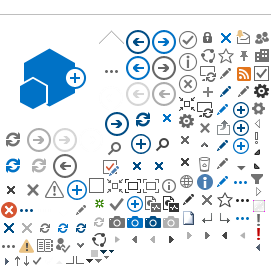| 1726 | PURESBio - Prozessverständnis und Nutzung von Pflanzenrückständen für eine nachhaltige Produktion von Pflanzenbiomasse, Arbeitspaket 7: Ableitung von Nutzungsempfehlungen für Reststoffe | PURESBio - Process understanding and usage of residues for sustainable plant biomass production. Workpackage 7, determination of reccomendations for residues use | 01.08.2014 00:00:00 | 31.03.2018 00:00:00 | abgeschlossen | completed | Leibniz-Zentrum für Agrarlandschaftsforschung (ZALF) e. V. | Leibniz Centre for Agricultural Landscape Research (ZALF) | x0x63x25x | Wurbs, Angelika; Lana, Marcos | x302x1081x | <div class='ntm_ZAL'>ZAL</div> | | | 2014 | PURESBio - Prozessverständnis und Nutzung von Pflanzenrückständen für eine nachhaltige Produktion von Pflanzenbiomasse, Arbeitspaket 7: Ableitung von Nutzungsempfehlungen für Reststoffe PURESBio - Process understanding and usage of residues for sustainable plant biomass production. Workpackage 7, determination of reccomendations for residues use Leibniz-Zentrum für Agrarlandschaftsforschung (ZALF) e. V. Wurbs, Angelika; Lana, Marcos Drittmittel Leibniz Centre for Agricultural Landscape Research (ZALF) completed abgeschlossen <div class="ExternalClass25CEABD0C56D4FB2AFF1E139A3099979">Das Potenzial der Verwertung organischer Reststoffe aus der landwirtschaftlichen Produktion für die Aufwertung von landwirtschaftlichen, insbesondere marginalen Standorten (d.h. ertragsschwache, nährstoffarme und mit geringem Humusanteil) zur Steigerung der Flächenproduktivität.</div> <div class="ExternalClassDA827A8FE46C44FB8A38BC96FA489EFF">Assess the potential of organic residues from sugar-cane production in the agricultural nutrient management, especially in marginal soils (low productive, nutrient poor and with low levels of soil organic matter), for improvement of field productivity.</div> BMBF3 PURESBio <div class="ExternalClass7E48D1D7-8B73-4A53-90A4-2F2A1E2E29A7"><ul><li>2017 Landnutzung und Wirkungen</li></ul></div> <div class="ExternalClass6CA07CBA-F841-4F38-80EF-265BC6293797"><ul><li>CTBE - Brazilian Bioethanol Science and Technology Laboratory</li><li>Embrapa Temperate Agriculture</li><li>Forschungszentrum Jülich</li><li>IFG - Federal Institute of Goiás, Campus Goiânia</li><li>UFG - Federal University of Goiás, Agronomy Department </li></ul></div> <div class="ExternalClass59CF91E2-6EC6-4B8D-A54B-4BB3A74DA121"><ul><li>BMBF-Verbundprojekte</li></ul></div> <div class="ExternalClass21B06674-F983-4394-8EC7-8F3D05B8F0E3"><ul><li>Projektträger Jülich (BMBF-Förderung)</li></ul></div> <div class="ExternalClass3095FF53-0584-44D2-B9C6-11531BED8654"></div> | <div class="ExternalClass25CEABD0C56D4FB2AFF1E139A3099979">Das Potenzial der Verwertung organischer Reststoffe aus der landwirtschaftlichen Produktion für die Aufwertung von landwirtschaftlichen, insbesondere marginalen Standorten (d.h. ertragsschwache, nährstoffarme und mit geringem Humusanteil) zur Steigerung der Flächenproduktivität.</div> | <div class="ExternalClassDA827A8FE46C44FB8A38BC96FA489EFF">Assess the potential of organic residues from sugar-cane production in the agricultural nutrient management, especially in marginal soils (low productive, nutrient poor and with low levels of soil organic matter), for improvement of field productivity.</div> | <div class="ExternalClass66CFB5A8-4F41-4886-B45A-DF2F7FD8480F"><ul><li>Inst. für Landnutzungssysteme</li><li>Inst. für Landschaftssystemanalyse</li></ul></div> | <div class="ExternalClass26DF6DBA-F2F0-417A-AAE0-F9697E001F83"><ul><li>Inst. of Land Use Systems</li><li>Inst. of Landscape Systems Analysis</li></ul></div> | <div class="ExternalClass60AA2C3A-12B9-410F-BE3E-CEEBD567F038">Dr. Marcos Lana; Dr. Angelika Wurbs</div> | Wurbs, Angelika | <div class="ExternalClass2FAF9469-CC1A-4EA4-9A80-3E7026FC37F1">Dr. Angelika Wurbs</a></div> | <div class="ExternalClass7E48D1D7-8B73-4A53-90A4-2F2A1E2E29A7"><ul><li>2017 Landnutzung und Wirkungen</li></ul></div> | <div class="ExternalClassAECBD639-C986-42B5-A644-AD7A7F036300"><ul><li>2017 Land Use and Impacts</li></ul></div> | x263x | <div class="ExternalClass6CA07CBA-F841-4F38-80EF-265BC6293797"><ul><li>CTBE - Brazilian Bioethanol Science and Technology Laboratory</li><li>Embrapa Temperate Agriculture</li><li>Forschungszentrum Jülich</li><li>IFG - Federal Institute of Goiás, Campus Goiânia</li><li>UFG - Federal University of Goiás, Agronomy Department </li></ul></div> | x2222x2223x1339x2225x2227x | <div class="ExternalClass59CF91E2-6EC6-4B8D-A54B-4BB3A74DA121"><ul><li>BMBF-Verbundprojekte</li></ul></div> | | Projektträger Jülich (BMBF-Förderung) | <div class="ExternalClass21B06674-F983-4394-8EC7-8F3D05B8F0E3"><ul><li>Projektträger Jülich (BMBF-Förderung)</li></ul></div> | | 3 | 3 | | <div class="ExternalClass11F6388B-A00D-4558-997F-FB2CCBD97DA7"><ul><li>PB3-Leitung (Leitung, Administration und Sekretariat)</li><li>Nachhaltige Landnutzung in Entwicklungsländern</li></ul></div> | <div class="ExternalClass4D0370D4-C6A8-4F70-8D13-ECBC3F79B377"><ul><li>Head of RA3 (head, administrative manager and secretariat)</li><li>Sustainable Land Use in Developing Countries</li></ul></div> |
